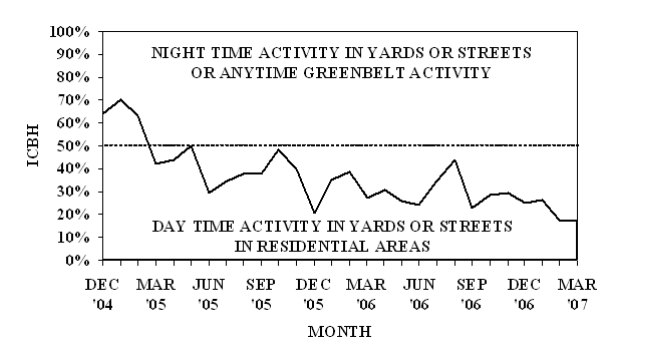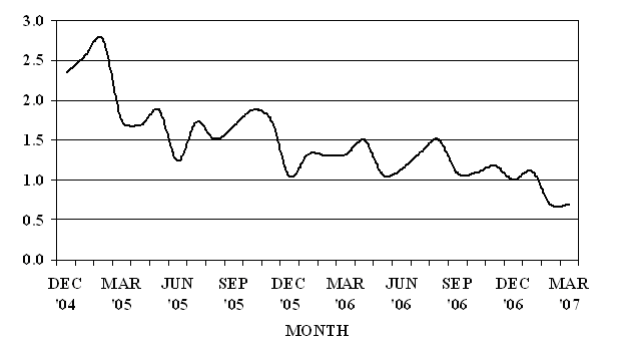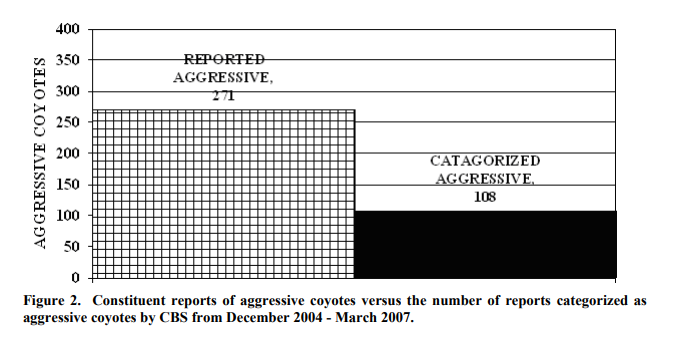Urban environments present unique challenges for wildlife management, particularly concerning extremley adaptable and more ubran species like the raccoon (Procyon lotor). A study by Graser et al. (2012) titled “Variation in Demographic Patterns and Population Structure of Raccoons Across an Urban Landscape” provides valuable insights into how urbanization affects raccoon populations.
Study Overview
Conducted in the Chicago metropolitan area, the research aimed to understand how different land-use types—urbanized areas, urban open spaces, and rural open spaces—influence raccoon density, demographics, and population structure. The study utilized live trapping and radiotelemetry across multiple sites to gather comprehensive data.
Key Findings

Population Density:
- Raccoon densities varied significantly across land-use types. Urban open sites exhibited the highest densities, averaging 14.84 raccoons/km², while urbanized areas had the lowest, averaging 4.96 raccoons/km². Rural open sites had densities similar to urban open areas, averaging 15.50 raccoons/km².

Age Structure:
- Urbanized areas had a younger age structure, with a notable absence of older individuals. In contrast, urban open and rural open sites had more balanced age distributions, indicating different survival or recruitment rates across these landscapes.
Sex Ratio and Reproductive Condition:
- The study found no significant differences in sex ratios or reproductive conditions across the different land-use types, suggesting that urbanization does not markedly affect these demographic parameters.

Critical Analysis
This study provides a comprehensive analysis of how urbanization impacts raccoon populations. The higher densities in urban open and rural open areas suggest that these environments offer more resources or favorable conditions compared to urbanized areas. The younger age structure in urbanized areas could indicate higher mortality rates or lower survival of older individuals, possibly due to increased human-wildlife conflicts or vehicular accidents.
Strengths
- Methodological Rigor: The use of live trapping and radiotelemetry across multiple sites provides robust data, allowing for reliable density and demographic estimates.
- Comprehensive Analysis: By examining various demographic parameters across different land-use types, the study offers a holistic understanding of urbanization’s impact on raccoon populations.
Limitations
- Geographical Scope: The study is limited to the Chicago metropolitan area, which may affect the generalizability of the findings to other urban landscapes with different environmental and socio-economic conditions.
- Temporal Constraints: The research was conducted over a specific period, potentially overlooking seasonal variations in raccoon behavior and demographics.
Implications for Urban Wildlife Management
Understanding the demographic patterns of raccoons across urban landscapes is crucial for effective management. The higher densities in urban open areas suggest that these spaces could serve as focal points for management interventions. The younger age structure in urbanized areas indicates a need for strategies to mitigate factors leading to higher mortality, such as traffic collisions.
Conclusion
I feel that Graser et al.’s study enhances our understanding of how urbanization affects raccoon populations, highlighting the importance of considering land-use types in urban wildlife management. The findings underscore the need for targeted management strategies that address the specific challenges posed by raccoon populations in different urban environments.
Reference
Graser, W. H., Gehrt, S. D., Hungerford, L. L., & Anchor, C. (2012). Variation in Demographic Patterns and Population Structure of Raccoons Across an Urban Landscape. The Journal of Wildlife Management, 76(5), 976–986.


